If you run a startup or small business, you know the pain involved in losing a customer. You probably wish you had a way to better understand their feelings toward your business before hearing that they’re done with you.
Customer expectations have only increased in the past few years. Many now look for highly personalized and immediate service, along with a quality product. Failure to meet those demands can result in misaligned expectations and churn.
Understanding customer sentiment is your best defense. It allows you to improve the Customer Experience (CX) for everyone – even those buyers who don’t provide feedback. Here’s how.
What Is Customer Sentiment?
In simple terms, customer sentiment is a metric for measuring perceptions of your business.
How do they feel? Maybe a customer feels frustrated because you cut a live chat widget feature from your website. They find email too slow, and want a quick way to get help. Alternatively, maybe they love the quality of service you provide, and it’s a major factor in their decision to keep buying.

What do they think? Another customer is very self-sufficient, and wants more self-service resources for finding answers on their own. They’re not going to reach out with that request, but they wish it were an option.
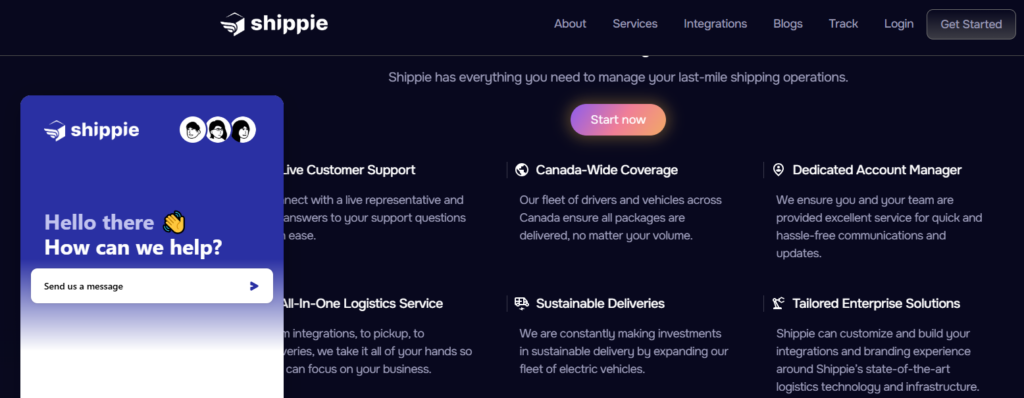
Customer sentiment encompasses all emotional responses to your business, including attitudes toward your branding, content, support, products/service, etc.
Information about these responses can be pulled from a diverse range of sources, including social media monitoring, solicited surveys, and text analysis. Once gathered together, you can organize the data into categories, and analyze it for trends.
If you focus more on quantitative data about your audience (demographics, behaviors), it’s easy to think customer sentiment isn’t important. On the contrary, it offers valuable, rich insights into customer preferences. Understanding your buyers as people helps you deliver a better product and CX, and as a consequence, has notable impact on retention.
Why Understanding Customer Sentiment Boosts Your Business
Negative interactions increase the rate of customer churn. Of course, we all understand that at a basic level.
If you ask any professional who works in the customer service space, they’ll tell you that their priority – job numero uno – is to make the customer happy. That’s not a hard data point, but an expression of sentiment.
What ‘happy’ means will look different depending on your niche. But the end goal is for the customer to experience success with your product. A clever marketing campaign or sleek landing page can convert, but unless you keep the positive experiences coming, those new adoptees won’t stick around.
Target Pain Points and Root Causes of Customer Dissatisfaction
Customer sentiment is a key way to identify pain points. If people often leave items in their carts and fail to check out, that’s important information. But it’s devoid of context.
Why are they abandoning their carts? How do they feel when that happens? What specific touchpoints turned a positive experience (they liked the product enough to put it in the cart) into a negative one?
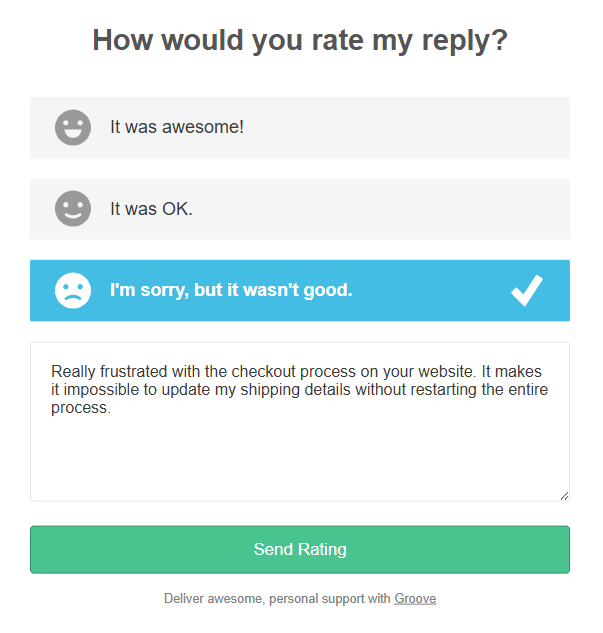
Getting to the bottom of those questions identifies problems to address. Maybe the overall sentiment about your checkout process turns out to be “frustrated”. This gives you a starting point.
You can assess the performance of the checkout page with a website audit. Or perhaps you might reformat a lengthy process into a single streamlined page. Either way, you only know you’ve been successful when the sentiment you’re hearing turns from “frustrated” into “happy”.
Enrich Your Understanding of Customer Demographics
To matter how niche your product or industry is, your buyers aren’t all the same. Customer sentiment can differ wildly across various groups.
Collecting information from all of your customer segments (based on age, purchasing history, location, etc.) enriches your understanding of your audience as a whole. It also tells you who you’re serving well, and who is being left out.
If you don’t know much about your buyers’ characteristics, you can use a platform like Google Analytics 4 (GA4) to learn more. This kind of tool provides insight into the types of customers who frequent your website:
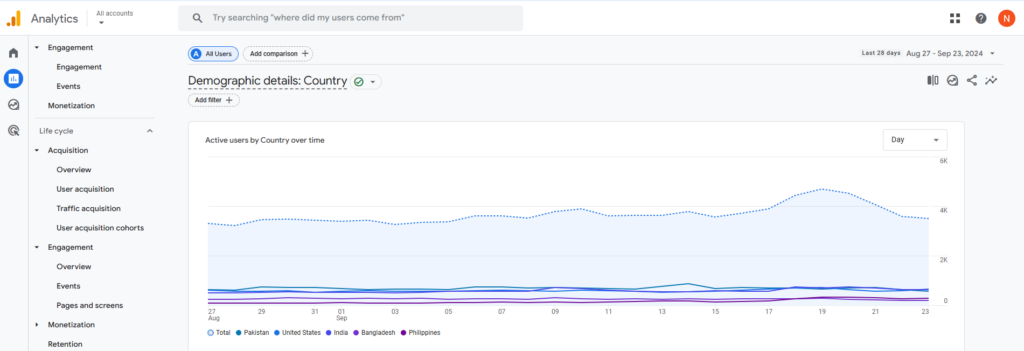
You’ll have to set up GA4 and let it collect data for a while. Once it has, you can view all kinds of reports. You’ll see overall summaries, and use filters to further categorize your audience based on geography, age, gender, device, user history, traffic source, and so on:
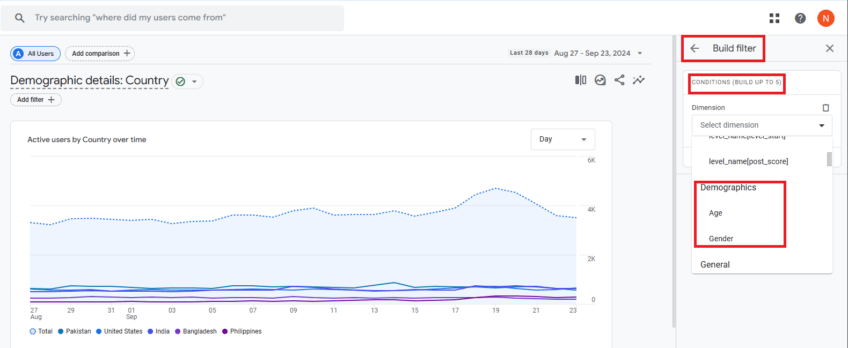
This information, when put into context with customer sentiment, allows you to better understand how a particular audience feels about your business. If you identify a group of users with particular characteristics who tend to bounce (leave immediately) after visiting your website, you can follow up with that specific group to learn how they perceive your site and what they feel it’s lacking.
How Customer Sentiment Is Measured
The most common channels for gathering customer sentiment include customer reviews, support ticket conversations, surveys, and dedicated tools. Let’s take a quick look at each.
Customer Reviews
Reviews are a primary driver of sales. They can be solicited (on a platform like Trustpilot) or unsolicited (i.e., Google or social media reviews). Generally, you don’t have to worry about paying for a premium service if your business is just starting out. Reviews have a tendency to naturally accrue over time.
Most customers depend on reviews to make value judgements about your brand, since they don’t have hands-on experience yet. And reviews are highly convincing, acting as social proof.
Think about how often you consult reviews before purchasing a new product or visiting a restaurant. You probably pay a lot of attention to the emotions in those reviews. Do the users sound annoyed or pleased?
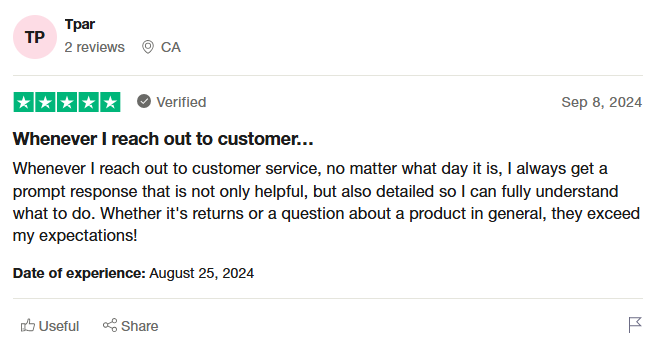
Some studies estimate that up to 93% of consumers read reviews before they make purchases. Just as many report that a negative review has caused them to avoid a business.
In other words, a single negative sentiment can deter hundreds of potential buyers. And the sad reality is that negative emotions tend to get more attention and make a bigger impact.
Here are two reviews for a popular local restaurant in Toronto. Most people loved the service and gave it five stars:

The positive reviews don’t have much activity, though. Meanwhile, the negative reviews have more engagement (likes):

These kinds of reviews can really harm your business. If there’s negative sentiment out there, people are going to see it, and it will affect their behaviors. You can’t do anything about that if you’re unaware.
Customer Support Conversations
All of your customer service conversation histories are invaluable for sentiment analysis. This includes emails, phone call logs, and live chat conversations.
Even small businesses often speak to dozens, if not hundreds, of buyers on a daily basis. Customer sentiment analysis uses that wealth of information to identify common points of friction, operational missteps, and other things that create negative feelings.
Sentiment information gathered from support logs is valuable because:
- It’s collected without customer knowledge, so it’s more likely to be unfiltered and authentic.
- Feedback is in real-time, so you can capture customer sentiment in the moment for a continual benchmark.
- You get more relevant data that’s shaped by recent experience rather than memory (as in the case of a review left weeks or months after an interaction).
- Concerns aren’t restricted to multiple choice survey questions, allowing for rich qualitative data.
Of course, it’s hard to use that information if it’s scattered or disorganized. Ideally, all of that will be synthesized in one place:

Our customer support helpdesk, Groove, is built around a shared inbox. Service agents can reply to and access communications from all the support channels you offer, such as email and live chat, in a single dashboard. That also makes it the perfect hub for sentiment analysis.
Customer Surveys
Surveys are the ‘industry standard’ for collecting and analyzing customer sentiment. What better way to understand how people feel than to ask them directly?
There are many types of surveys you can run. Occasional in-depth surveys are great for digging into specific issues and gathering detailed feedback. If carefully optimized, they offer a wealth of valuable information.
Long-form surveys do require more time, both for your team and your customers. So they’re best used occasionally. For more regular sentiment-related data, you can set up short one- or two-question surveys that require next to no effort to send and respond to.
CSAT (Customer Satisfaction) Surveys
Customer Satisfaction (CSAT) is a measure of how people feel after a specific interaction. It’s helpful for identifying causes of dissatisfaction. When poor sentiment is expressed right after a particular touchpoint, a causal relationship is likely.
If your support team uses Groove, you can easily enable automatic CSAT surveys. This lets you gather real-time insights on the quality of your customer service.
The survey (which you can customize) is automatically embedded at the end of a support ticket conversation, once you’ve ‘closed’ (resolved) the ticket. It asks customers to immediately rate the service they received on a scale of 1-10. You can also offer an open-ended response field for them to share more detailed thoughts.
Then, in your reporting dashboard, you can view the results:

This provides a quick picture of overall sentiment towards your customer support. You can keep an eye on trends and review specific responses to learn how much negative sentiment there is, and what’s causing it.
NPS (Net Promotor Score) Surveys
Net Promotor Score (NPS) measures the likelihood that a customer will recommend your business. While CSAT ratings provide insight into feelings about customer service, NPS is a measure of overall sentiment. After all, buyers aren’t likely to recommend you to their friends and networks unless they’re pretty happy with the overall experience.
Groove integrates with Delighted, which you can use to send out NPS surveys. Customers are asked to rate the likelihood that they’ll recommend your business on a scale from 1-10. As with CSAT surveys, they also get an extra field to explain why. Customers are then categorized as Promoters (positive sentiment), Detractors (negative sentiment), or Passives (neutral sentiment).

You can use Delighted’s own platform to interpret NPS results in real time, or conduct sentiment analysis automatically. You can also connect it to Groove so you get a ticket when customers respond. If you want to track problems or unhappy customers, you can configure the settings so tickets are only created for negative scores, which you can then review and respond to.
Sentiment Analysis Software
If you have the budget for it, sentiment analysis software can be a great time-saver. It automates the analysis of written content such as customer reviews, emails, and support tickets.
These tools use advanced natural language processing (NLP) and machine learning algorithms to quantify and categorize sentiments, providing valuable quantitative data. They analyze text and determine sentiment polarity, categorizing the sentiments they find as positive, negative or neutral.
Most can process customer feedback from online reviews, support interactions, and survey answers. The results help to identify patterns, trends, and fluctuations in sentiment, both now and over time.
SentiSum, for example, breaks down text using ‘aspect-based sentiment analysis’, which identifies ‘topics’ and ‘subtopics.’ It then correlates those topics to specific aspects of your product or service:

With this type of software, you can more easily determine how customers feel. It can also be leveraged to identify current trending topics or pain points.
Whether you take a manual, software-based, or hybrid approach, performing regular sentiment analysis is vital for any growth-focused business. For more details on the full process, check out our guide to conducting your first customer sentiment analysis.
Improve the Customer Experience Across All Channels With Customer Sentiment
In a crowded marketplace, the greatest differentiator is the quality of customer experience. Buyers are no longer content to be treated as interchangeable. A standout CX needs to be personalized, targeted, and proactive.
To know whether you’re providing that experience, or how you can do better, you need to understand customers’ genuine feelings toward your business. This lets you create more meaningful experiences for them, improving retention and reducing churn.
Groove helps your support team deliver a seamless customer experience. The shared inbox and features like CSAT surveys let you collect valuable insights. Organization, automation, and integration options (just to name a few) enable you to act on those insights immediately.
Sign up for a free trial of Groove to build positive experiences that customers want to talk about!



